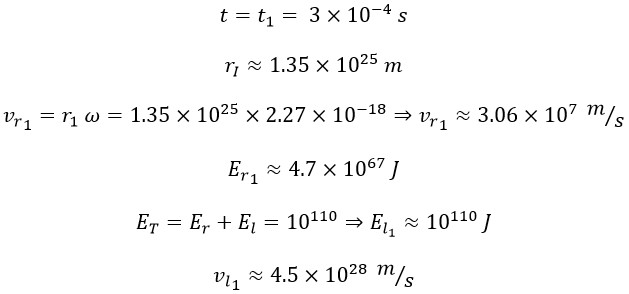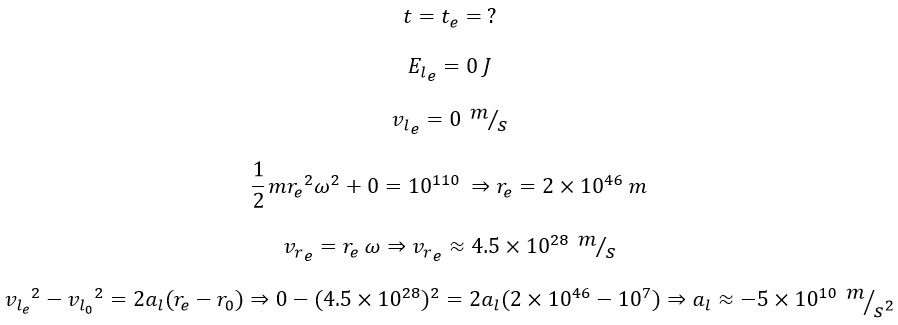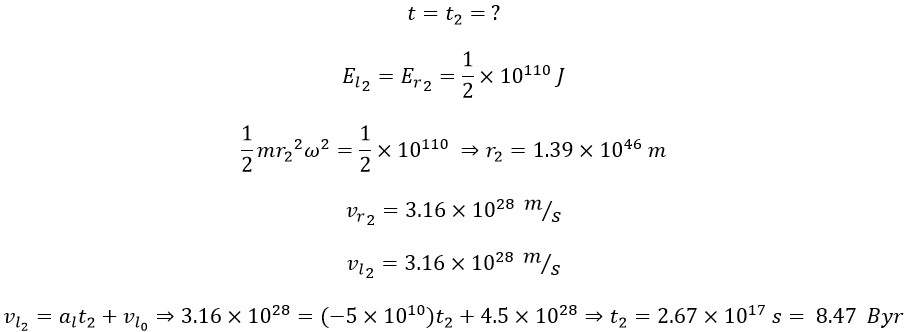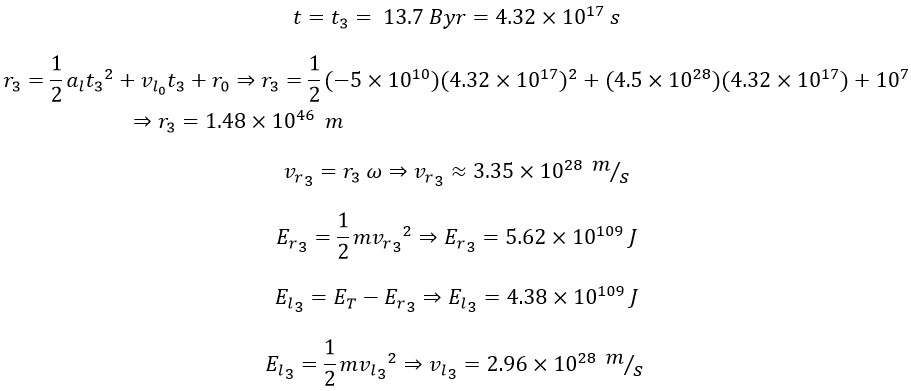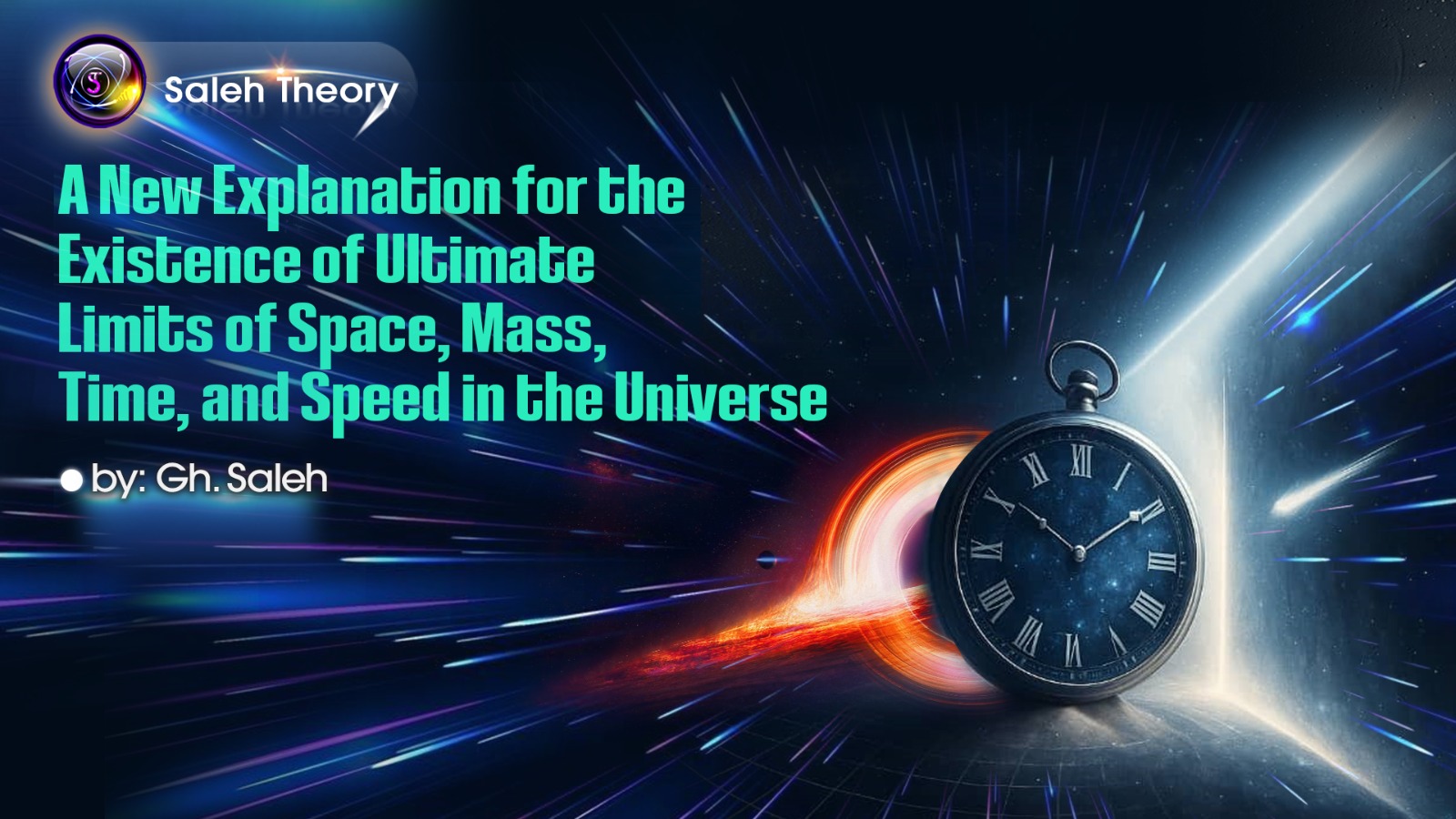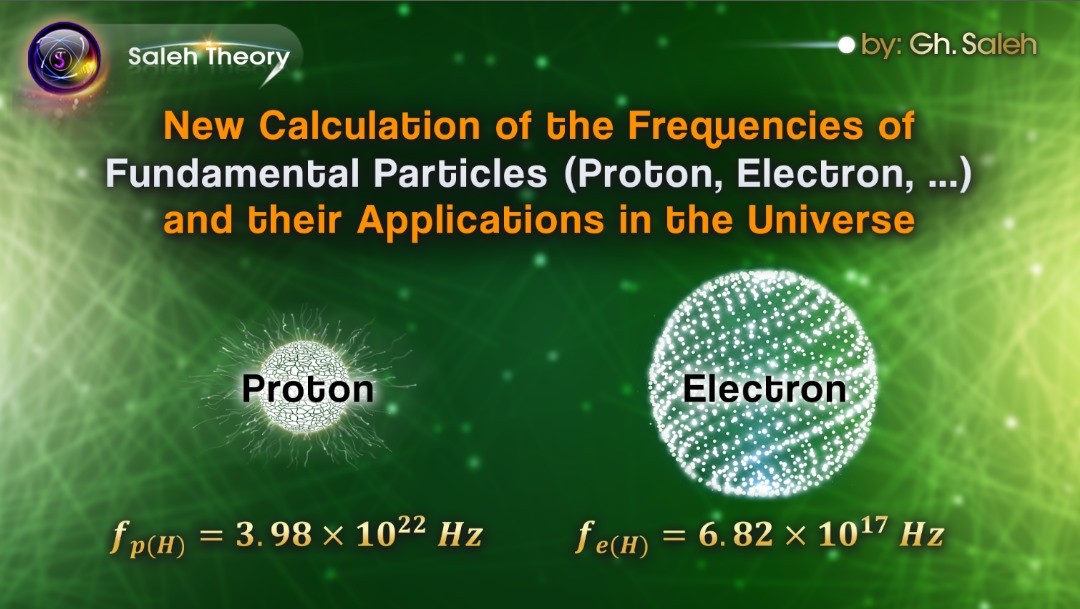
Calculation of Energy Conservation Equations Utilizing Linear and Rotational Energy in the Universe
Given that the universe around us has a starting point called the Big Bang, and this starting point had an initial energy, and that due to the energy of this enormous explosion, objects in the surrounding universe expand, it can be said that our total energy is the same as the initial energy at the time of the Big Bang. On the other hand, in previous articles, we have proved that celestial objects have two types of motion: linear and rotational. Therefore, this total energy at any moment is equal to the sum of the two parts: linear energy and rotational energy.
Total Energy at the moment of the Big Bang (ET) is equal to the Rotational Energy (Er) plus the linear Energy (El)

But as mentioned in previous articles, the primary motion in the universe is rotational. Furthermore, we have demonstrated that Hubble's law provides evidence for the existence of rotational motion in the universe. The speed described in Hubble's law is tangential speed, which depends on two factors: the distance from the centre, "D=r" and the Hubble constant, "H=ω" which represents the constant angular speed.
However, our universe also originates from a massive explosion, the Big Bang. This explosion generates linear motion. Therefore, to determine the physical parameters of the universe at different times, it is essential to consider both the rotational motion with constant angular velocity and the linear motion simultaneously. On the other hand, in previous articles, using the Monte Carlo method, we have calculated the total energy of the universe (ET) at the moment of the Big Bang, which was approximately 10110 joules. In this article, by applying the principle of energy conservation, we calculate various parameters from the initial moments of the Big Bang, through the end of the cosmic inflationary stage, to the present time, the time of equality between linear and rotational energy, and finally, the end of the universe. The results are presented in a table at the end of this article.

Here, Er represents rotational energy, and El represents linear energy. By utilising the definitions of linear and rotational energy, these two parameters are expressed in terms of the total mass of the universe, m =1053 kg; the radius of rotation, r; the angular velocity (which is constant and equivalent to the Hubble constant ω = H = 2.27 ×10-18 s-1); and the linear speed vl":

In previous articles [3], we have demonstrated that the universe was a spherical at the time of the Big Bang, with a size somewhere between the Earth and the Moon r0 ≈ 107 m. Given the radius of the universe at the moment of the Big Bang, the contribution of rotational energy was negligible and could be ignored. Therefore, at the time of the Big Bang, the total energy can be considered to arise entirely from linear motion:
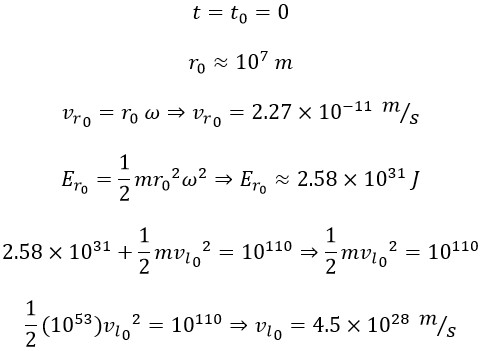
In previous article, using the density of the universe, we have calculated the radius of the universe (r1) at the end of the inflationary phase. Thus, we have:

As indicated—and as discussed in previous articles—over time, the amount of linear energy decreases, and an equivalent amount is added to the rotational energy. This implies that at the end of the universe’s outward trajectory, when it reaches its maximum radius, all the energy will be converted into rotational energy, and the linear energy will reduce to zero:
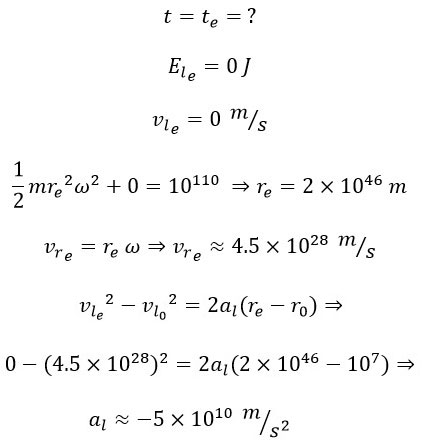
This represents the average deceleration that reduces the linear velocity (and consequently the linear energy). Thus, in linear motion, we observe a motion with constant negative acceleration.

Next, we examine the time when the rotational and linear energies are equal:
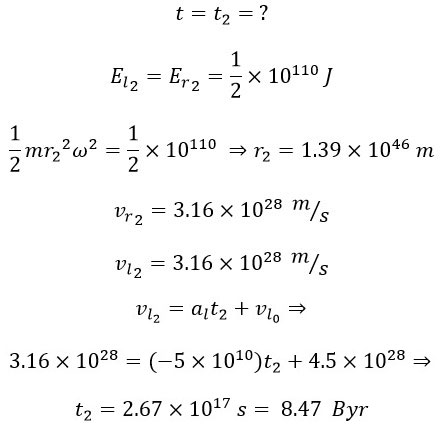
We now proceed to analyze the physical parameters of the universe at present.
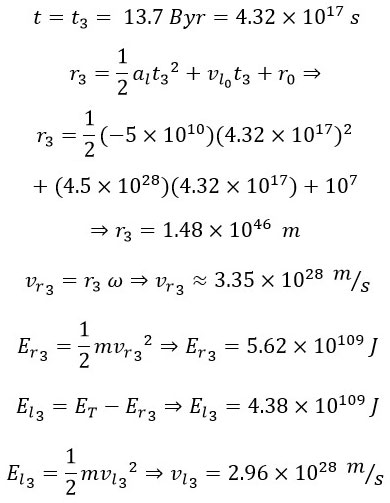
We present a summary of the results in the table below:
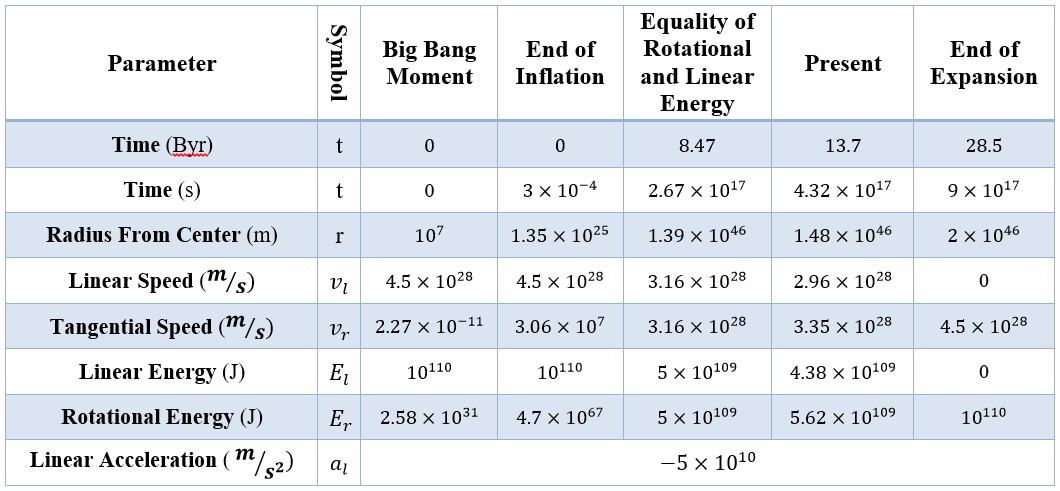
As it is clear from the equations, at the beginning of the universe, all energy is in the form of linear energy, and rotational energy is almost zero and at the end of the universe, all energy is in the form of rotational energy, and linear energy is zero.
References:
[1] Saleh, Gh. "Demonstration of the Rotational Motion of the Universe Using the Rotational Motion of the Planets and Stars (The Principle of Rotational Motion of Celestial Objects in the Universe)." Saleh Theory, 19 Apr. 2025, https://www.saleh-theory.com/article/demonstration-of-the-rotational-motion-of-the-universe-using-the-rotational-motion-of-the-planets-and-stars-the-principle-of-rotational-motion-of-celestial-objects-in-the-universe
[2] Saleh, Gh. "New Computational Table of Physical Parameters for the Moments of Beginning, Inflation, Present, and End of the Universe 2025." Saleh Theory, 29 Jan. 2025, https://www.saleh-theory.com/article/new-computational-table-of-physical-parameters-for-the-moments-of-beginning-inflation-present-and-end-of-the-universe-2025
[3] Saleh, Gh. "New Discoveries Using the Density of Galaxies in Universe 2025 (Elya Phenomenon)." Saleh Theory, 20 Jan. 2025, https://www.saleh-theory.com/article/new-discoveries-using-the-density-of-galaxies-in-universe-2025-elya-phenomenon
 Download PDF
Download PDF 
